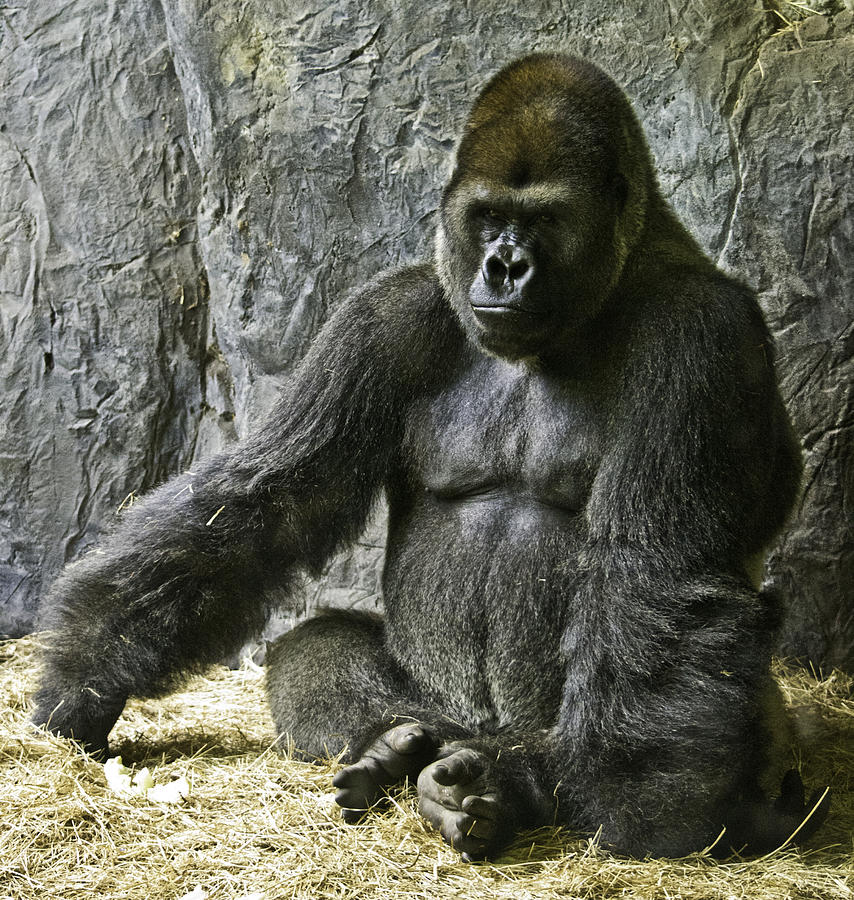

The most active eating time is in the morning, then a rest around mid-day before eating again in the afternoon as night approaches. Most of this time is spend feeding on insects, shoots/stems, leaves, roots, flowers and fruits to sustain their large size. Mountain gorillas are active only during the day (6:00 am to 6:00 pm). Mountain gorillas can stand and move upright but they prefer knuckle-walking where they use their fingers to support their weight. They have eyes that are dark brown and hands that are longer than the legs. Like all other gorilla species, mountain gorillas can be identified by the unique nose prints of each individual. The largest lowland gorilla ever recorded was shot in Cameroon and weighed 267 kilograms. However, Mountain gorillas generally weigh less and is smaller than the eastern lowland gorilla. Silverbacks are also taller and four times stronger than the largest human. An adult female gorilla weighs about 100 kilograms while a silverback gorilla can weigh about 195 kilograms. Adult male mountain gorillas are known as silverbacks because of the silver hair behind their back. This allows them to live in cold higher altitudes. Mountain gorillas are characterized by a thicker fur compared to all the other types of gorillas in Africa. Physical Characteristics of Mountain Gorillas You might want to look at some facts about mountain gorillas in our shorter article. For this reason, the mountain gorilla is listed as endangered by the IUCN. The last gorilla census in 2018 found that about 1,004 mountain gorillas still roam the planet. One of the reasons why mountain gorillas are given so much attention is because they cannot survive in captivity like the lowland gorillas. The overall population of western lowland gorillas is over 250,000 while the eastern lowland gorillas are less than 8,000. Lowland gorillas (Eastern and Western) are found in the Democratic Republic of Congo, Cameroon and other countries in west and central Africa. The high altitude supports dense vegetation, are cold and cloudy. These areas provide the right habitat, ecology and altitude (7,200–14,100 feet) to allow the mountain gorillas thrive. In Congo, the mountain gorillas are found in Virunga National Park while in Rwanda you can find them in the Volcanoes National Park. Uganda has about half of the overall population in Bwindi Impenetrable National Park and Mgahinga Gorilla National Park. Mountain gorillas are only found in three countries – Uganda, Rwanda and the Democratic Republic of Congo. In 1967, Colin Groves came up with the idea of giving different names to the different species of gorillas and that is how the name western lowland gorilla, eastern lowland gorilla and the mountain gorilla came to be. The name gorilla was adopted in 1852 after the genus were first called Troglodytes. The eastern gorillas further split into what we now know as mountain gorillas and eastern lowland gorillas 400,000 years ago.

After a period of time (About 2 million years ago), Eastern gorillas separated from the western gorillas in west and central Africa. Gorillas in general are believed to have evolved from monkeys and other apes in Arabia and Africa about 9 million years.


 0 kommentar(er)
0 kommentar(er)
